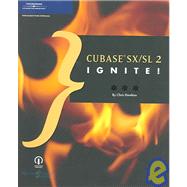| Introduction | xv | ||||
|
1 | (12) | |||
|
2 | (1) | |||
|
2 | (1) | |||
|
3 | (1) | |||
|
3 | (6) | |||
|
4 | (1) | |||
|
4 | (5) | |||
|
9 | (4) | |||
|
9 | (2) | |||
|
11 | (1) | |||
|
12 | (1) | |||
|
13 | (12) | |||
|
14 | (5) | |||
|
14 | (2) | |||
|
16 | (3) | |||
|
19 | (6) | |||
|
19 | (2) | |||
|
21 | (4) | |||
|
25 | (18) | |||
|
26 | (4) | |||
|
26 | (2) | |||
|
28 | (2) | |||
|
30 | (4) | |||
|
30 | (1) | |||
|
31 | (1) | |||
|
32 | (2) | |||
|
34 | (9) | |||
|
34 | (1) | |||
|
35 | (1) | |||
|
36 | (3) | |||
|
39 | (4) | |||
|
43 | (12) | |||
|
44 | (1) | |||
|
45 | (1) | |||
|
45 | (2) | |||
|
47 | (8) | |||
|
47 | (2) | |||
|
49 | (1) | |||
|
50 | (5) | |||
|
55 | (22) | |||
|
56 | (8) | |||
|
56 | (1) | |||
|
57 | (7) | |||
|
64 | (13) | |||
|
64 | (2) | |||
|
66 | (1) | |||
|
67 | (3) | |||
|
70 | (1) | |||
|
71 | (3) | |||
|
74 | (3) | |||
|
77 | (24) | |||
|
78 | (5) | |||
|
78 | (1) | |||
|
79 | (4) | |||
|
83 | (7) | |||
|
90 | (6) | |||
|
91 | (2) | |||
|
93 | (3) | |||
|
96 | (5) | |||
|
96 | (1) | |||
|
97 | (3) | |||
|
100 | (1) | |||
|
101 | (14) | |||
|
102 | (10) | |||
|
102 | (1) | |||
|
102 | (3) | |||
|
105 | (1) | |||
|
106 | (1) | |||
|
107 | (5) | |||
|
112 | (3) | |||
|
115 | (10) | |||
|
116 | (2) | |||
|
118 | (3) | |||
|
121 | (4) | |||
|
121 | (2) | |||
|
123 | (2) | |||
|
125 | (10) | |||
|
126 | (3) | |||
|
129 | (2) | |||
|
129 | (1) | |||
|
130 | (1) | |||
|
131 | (4) | |||
|
132 | (1) | |||
|
133 | (2) | |||
|
135 | (18) | |||
|
136 | (3) | |||
|
139 | (2) | |||
|
141 | (7) | |||
|
144 | (3) | |||
|
147 | (1) | |||
|
148 | (5) | |||
|
148 | (2) | |||
|
150 | (3) | |||
|
153 | (16) | |||
|
154 | (6) | |||
|
160 | (2) | |||
|
162 | (7) | |||
|
162 | (4) | |||
|
166 | (3) | |||
|
169 | (8) | |||
|
170 | (4) | |||
|
174 | (3) | |||
|
177 | (10) | |||
|
178 | (3) | |||
|
178 | (2) | |||
|
180 | (1) | |||
|
181 | (1) | |||
|
182 | (1) | |||
|
183 | (4) | |||
|
187 | (8) | |||
|
188 | (3) | |||
|
191 | (1) | |||
|
192 | (3) | |||
|
195 | (14) | |||
|
196 | (5) | |||
|
201 | (2) | |||
|
203 | (3) | |||
|
206 | (3) | |||
|
209 | (14) | |||
|
210 | (4) | |||
|
214 | (9) | |||
|
214 | (1) | |||
|
215 | (2) | |||
|
217 | (6) | |||
|
223 | (12) | |||
|
224 | (1) | |||
|
225 | (3) | |||
|
228 | (2) | |||
|
230 | (5) | |||
|
235 | (16) | |||
|
236 | (9) | |||
|
236 | (4) | |||
|
240 | (5) | |||
|
245 | (6) | |||
|
251 | (10) | |||
|
252 | (4) | |||
|
256 | (5) | |||
|
261 | (4) | |||
|
262 | (1) | |||
|
262 | (1) | |||
|
262 | (1) | |||
|
263 | (1) | |||
|
263 | (2) | |||
|
265 | (6) | |||
|
266 | (2) | |||
|
268 | (3) | |||
| Glossary | 271 | (4) | |||
| Index | 275 |








